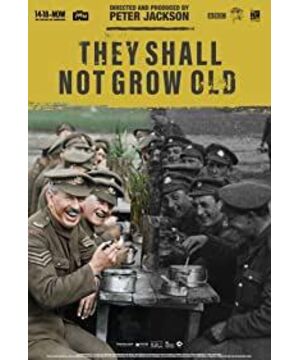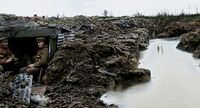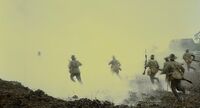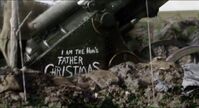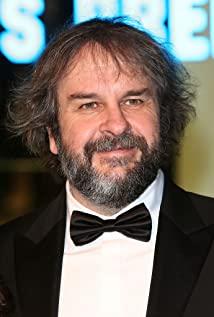Since its release, "They Don't Grow Old" has been mired in controversy. The debate stems from people's consideration of the authenticity of documentaries. From the point of view of the creative process, although this film was released in 2018, not a single frame in the whole film was shot in the later stage. All the pictures come from the hundreds of hours of World War I preserved in the British Imperial War Museum. original material. The camera equipment at that time was not advanced enough to record the simultaneous sound of the picture at the same time, so these raw materials were silent. The narration in the film that fits the picture highly comes from interviews with nearly 300 veterans who have participated in the war. These materials exceed 600 hours and are preserved in the BBC and the British War Museum. In addition, the film production team also invited a lip-interpreter to read the lips of the video material, and invited people from different regions and different accents during the war to dub. In addition, various environmental sounds such as mine explosions, shells, bullets, etc. are all post-production by the film team, trying to restore the battlefield of World War I a hundred years ago. It is precisely because of these post-produced sounds and the director’s editing and splicing of the sound and the picture that they are subject to some people’s doubts: documentaries are “serious discourses of reality”, and the material of documentaries must strictly reflect reality, while strict It means being objective, requiring the witness of the filmmaker and shooting in a documentary style, otherwise the documentary will lack authenticity. So, does "They Don't Grow Older" lack this authenticity? I don't think so. We can think of "They Don't Grow Old" as a new documentary film. The new documentary film does not exclude fiction. One of its principles is that documentaries can and should adopt all fictional means and strategies to achieve reality. Director Jenny Livingston also mentioned: "The reality of these documentaries is in line with the reality that people expect in documentary films, which is made and constructed by the filmmakers through manipulative means." Then, How does "They Don't Grow Old" come true? First of all, it uses a first-person perspective to recreate the real images of Baiyue years ago with the microscopic memories of ordinary soldiers participating in the war. "First-person perspective" is a major feature of the new documentary film. This first-person perspective narration can quickly immerse the audience in the events that the documentary is about to describe, with a strong sense of substitution. In addition to the first-person perspective, "They Don't Grow Old" also adopts the narrative mode of a feature film, so that the film has a beginning, development, climax and ending like a feature film. But the story was told not by one person, but by nearly 300 rank-and-file soldiers of World War I. These interview materials are the most precious historical facts, and they are the memories of war witnesses on the battlefields of World War I. The 300 soldiers must have a large number of different opinions. The director intercepted different clips of different people and re-edited these clips to make them a complete one. A whole story line, through which this whole story line reflects everything experienced by millions of soldiers who share a universal common destiny. This universality reflects the truest history, and the most vivid history. This personal narrative method increases the personal experience of the narrative and brings rich associations from the limited narrative. For example, in "They Don't Grow Old", the director used a large number of illustrations instead of the fragment about the moment of the war. The missing shots satisfy the audience's natural curiosity and subtly express the soldiers' subjective emotions. In addition to the "first-person perspective" and the narrative mode of feature films, the director's scheduling of shots is also to achieve reality: to make modern audiences feel the real battle a hundred years ago. As mentioned earlier, the pictures of "They Don't Grow Old" are derived from historical materials a hundred years ago. Not a single frame was shot by the director's team, so how did the director arrange the pictures? First of all, the staff of the film production team repaired all the pictures. These video materials from a hundred years ago are basically short-format, which do not satisfy the viewing experience of modern people. Therefore, after the soldiers entered the battlefield, we saw the change of the picture: black and white changed to color, and the short format became a long format suitable for modern people's viewing habits. This change of frame and picture has a strong appeal and a sense of substitution, making the audience immersed in the real battlefield environment at once. This sense of immersion is the perfect embodiment of the realism of documentaries. In addition, the director cuts the picture to make there are a lot of close-up shots in the film, which greatly enhances the visual power of "They Don't Get Old". These narrative shots make it easier for viewers to enter the documentary. In addition to the narrative and scene scheduling, the music of "They Don't Grow Older" also strives to give audiences a sense of realism about World War I. Traditional documentaries believe that music is used in feature films to express the atmosphere and emotions, which is highly subjective, especially real films, which are exclusive to music. But the new documentary films do not exclude music, they use music as a means to achieve reality. The music in "They Don't Grow Old Anymore" is based on songs widely circulated by soldiers during the First World War. These songs contain elements that reflect the characteristics of the era, such as whistles, snare drums, harmonica and so on. Those young people who have just entered the battlefield will whistle, and the harmonica is also their most common musical instrument. The sound of the small drum is not necessarily the sound of the real drum, but may also be the sound of the soldiers beating iron tools... and these sounds are full of representativeness , is a symbol of soldiers. The music in the film shows the audience a part of the soldiers' lives through these symbols. In addition to music, the film team is time-consuming and labor-intensive Various background sound effects are created to increase the audience's experience. Although these sound effects were not recorded in that era, they restored the real effects of the scene as much as possible. This kind of realism is similar to "like performance" and "reproduction", which is a way to help the audience experience the realism of World War I. a means. Despite these formalities, the core and themes of "They Don't Grow Older" are real. Its truth comes from rational thinking about the First World War. And this kind of reflection on history is also a major feature of the new documentary film. In the film, we can see that for ordinary soldiers, this war is meaningless. There is mutual respect between British soldiers and German soldiers, not as we imagine the two armies at war, and the soldiers will hate each other. British soldiers admired the German soldiers and believed that they were also very cultivated gentlemen before going to war. But on the battlefield, they are all pawns of war, and they all follow the orders of the state and need to kill each other. In the end, Britain was victorious, and the soldiers dragged their exhausted bodies back to their hometowns, but they were regarded as marginal people, not heroes, but a group of neglected young people. The stark contrast between the enthusiasm before the war and the indifference after the war is a fact. By compressing the time, the director made these two completely different situations meet in a short period of time, which caused a huge gap in the hearts of the audience. This kind of mental gap makes the audience realize more deeply: this war is meaningless. This kind of reflection is more effective than a didactic indoctrination of the audience. It can be seen that "They Don't Grow Old" is a documentary that takes care of the audience's feelings very much. It respects its own audience and respects history. It's a warm, less stereotypical documentary. From the first-person narrative perspective to the narrative mode of feature films, from color changes to frame changes, from background sound effects to music selection, every detail and every design is an effort to bring the audience into the battlefield 100 years ago, and let the audience Feel the most real World War I, and feel the funny and cruelty of this war just like the soldiers who participated in the war. So, I accept its authenticity. And the truth is the life of a documentary, "They Don't Grow Old" is an uncompromising documentary. To sum up, "They Don't Grow Old" is an innovation and attempt to a new documentary film, a masterpiece, which provides more possibilities for the creation of documentaries. It breaks the barriers of various film styles, blurs the boundaries between feature films and documentaries, but has a strong unity and integrity like a collage. The pursuit has made it reach the reality recognized by people from all aspects, and this sense of reality has been deeply rooted in the hearts of the people. At once As Williams puts it: "They clearly introduced a newer, more contingent, relative, postmodern reality, a reality far from being abandoned, as the documentary film tradition faded. This truth is still at work.” So, people are arguing on the surface whether “They Don’t Grow Old” is a documentary, but in fact they are discussing what a documentary is, and what form and model it should have. . The introduction of the concept of new documentary films has enhanced our understanding of documentaries and authenticity, and has also helped us resolve the question of whether "They Don't Grow Old" is a documentary. The new documentary film is a breakthrough and innovation in the development of documentaries. In my opinion, "They Don't Grow Old" is a typical representative work of the new documentary film, and its techniques, forms, modes and final effects all carry new records. The feature of the film is the application and extension of the new documentary film. If we approve of new documentary films, we should also approve of "They Don't Grow Old" as a documentary.
View more about They Shall Not Grow Old reviews


